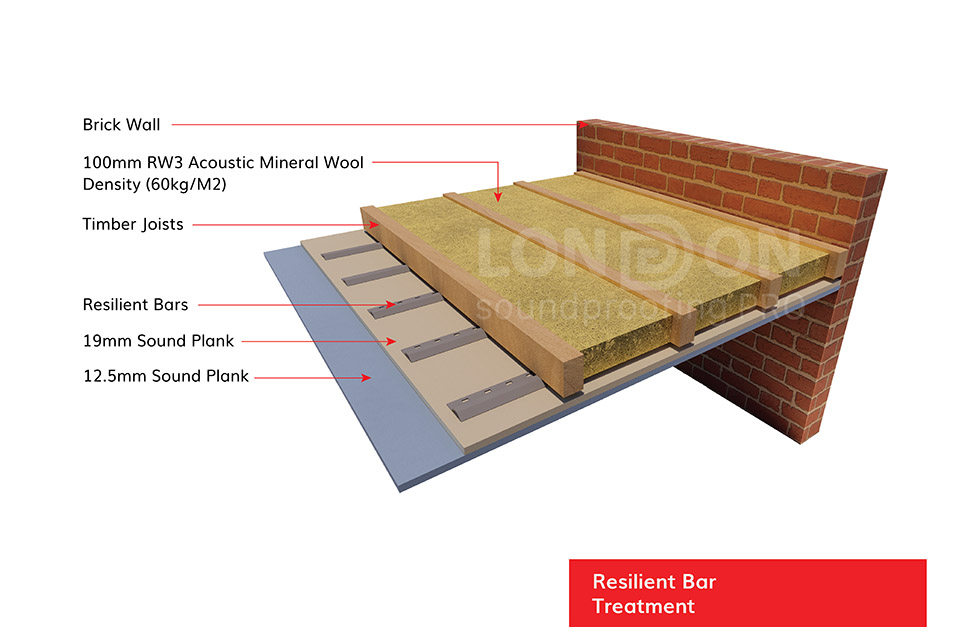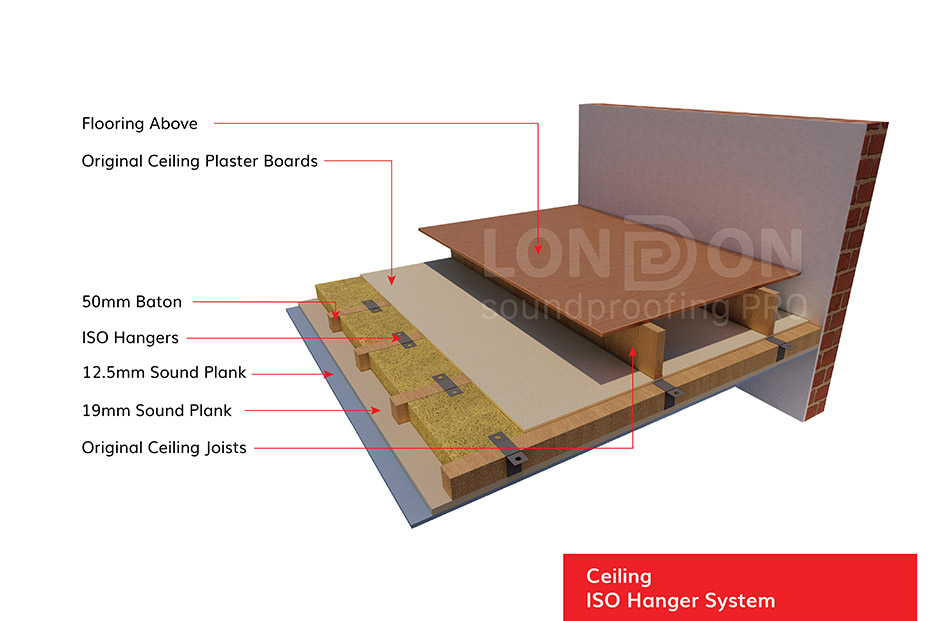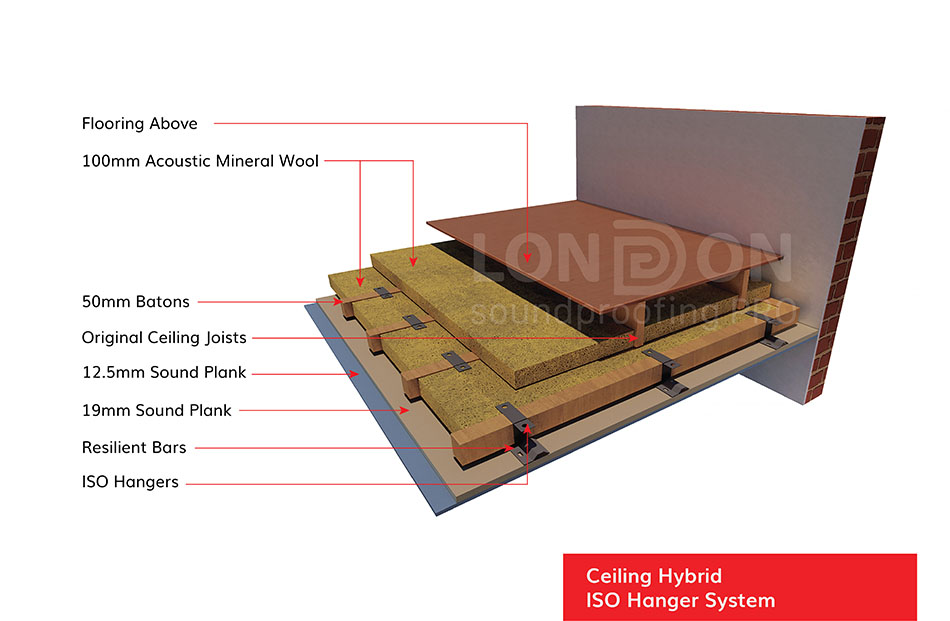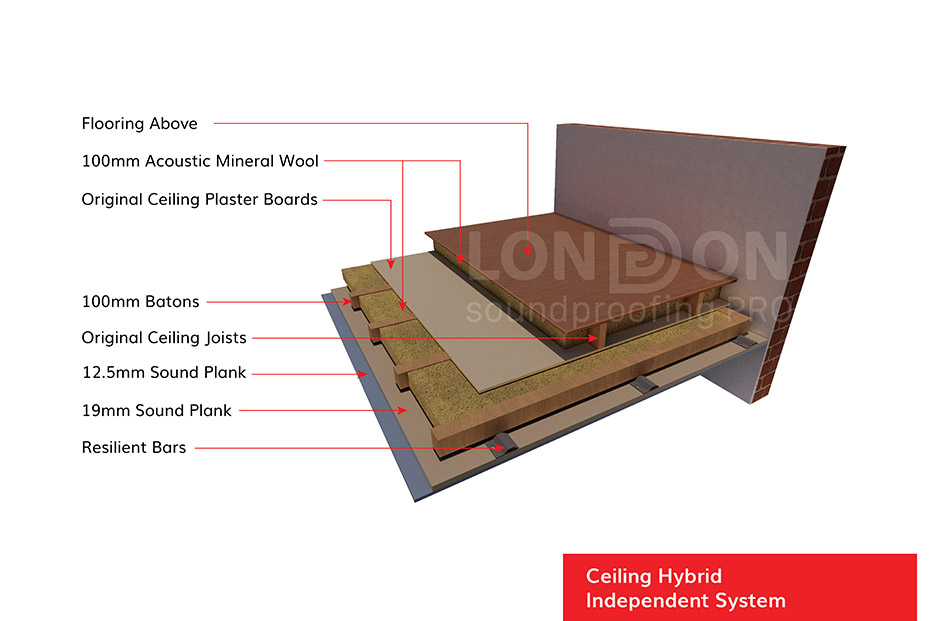Types of Ceiling Noise to Eliminate With Soundproofing
For different requirements and budgets, there are a variety of ceiling soundproofing products available. The options range from an independent ceiling, an insulation-laden new ceiling to a soundproofing-system draped existing ceiling. The level of soundproofing required depends on the level and type of noise you're dealing with. Always remember, the ceiling in your home is an essential element in controlling noise transfer. Therefore, choosing the right soundproofing material or system is of critical importance.
In conclusion, soundproofing offers a valuable solution for reducing unwanted noise in your property originating from the ceiling. Whether it's a timber ceiling, standard ceiling, or any other form, there's a soundproofing product to meet your needs. Acoustic solutions such as the use of soundproofing systems, materials and insulation can significantly reduce both impact and airborne noise, consequently improving the acoustics within your property and your overall living comfort.
Ceiling Soundproofing Solutions
Soundproofing a ceiling is not just for musicians or those with particularly noisy neighbours. It can also be a valuable means of creating a peaceful domestic environment. Whether you are soundproofing a concrete ceiling inside a residential dwelling or looking for methods to soundproof your ceiling within an apartment, there is a range of effective soundproofing solutions that can cater to your specifications.
One way to soundproof a ceiling is to install acoustic insulation within the ceiling joists. The insulation absorbs sound wave and muffles airborne and impact noise, reducing disturbance from above. Another solution is to install a suspended ceiling. This method of soundproofing involves hanging a secondary ceiling below your current ceiling allowing the space between the two to absorb and dampen noise transmission. Suspended ceilings can be combined with acoustic ceiling panels which are designed to absorb and reduce impact sounds. However, do remember that both methods may cause ceiling height loss.
Two other effective ceiling soundproofing techniques are the use of sound isolation clips and the installation of a reductoclip ceiling system. Sound isolation clips are affixed to the joist in the ceiling. A furring channel is then snapped into the clip which then supports a new drywall ceiling, providing an effective barrier against both airborne and impact noise. The reductoclip ceiling system is an excellent way to soundproof a ceiling without the need to remove the existing one and can drastically reduce the transfer of noise onto the ceiling. This system or any other acoustic insulating product can often be found at a soundproofing store in a variety of sizes and shapes. Material like acoustic foam or vinyl barriers can be sewn or applied to the ceiling to absorb both airborne and impact noise effectively.
The best soundproofing solutions combine methods and materials to maximise their effectiveness. It is essential to consider your specific needs and consult experts to choose the best method and material for your particular situation.
Soundproof Ceiling Installation
Soundproofing a ceiling is a crucial factor in addressing and reducing airborne sound transmission, particularly when seeking to minimize noise disruptions in a residential or commercial capacity. There's a range of ceiling and wall soundproofing solutions available, designed to cater to various needs and construction types. They can be applied to timber and concrete ceilings alike, and each provides a varying level of soundproofing strength.
Timber ceiling systems, for instance, are a typical structure for many traditional properties. To create a soundproof ceiling in such settings, soundproof plasterboard and mass-loaded vinyl are often used to isolate the existing ceiling structure, adding significant mass to the ceiling and enhancing its ability to absorb airborne sound effectively.
Concrete ceilings, on the other hand, are common in newly built apartments or commercial properties. They bear unique soundproofing challenges stemming from their solid, hard surface that tends to reflect sound rather than absorb it. In these instances, the preferred method is typically fixing the soundproofing materials directly to the concrete ceiling. This technique adds the required soundproof material to the existing ceiling joists without altering the room's aesthetic, ensuring that airborne sound is reduced as much as possible.
Whether for concrete or timber ceilings, it's important to carefully consider the cost of soundproofing, acknowledging that while initial expenditures may be substantial, the benefits of reducing sound transfer can offer priceless peace and tranquility. To ensure you find the right soundproofing solution that will offer maximum effectiveness against sound transmission traveling into the room through a ceiling, it's essential to consult with an experienced professional who will diligently evaluate your existing ceiling structure and recommend the most optimal soundproofing treatment for your individual needs.






